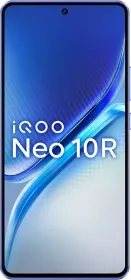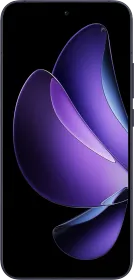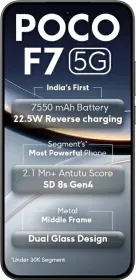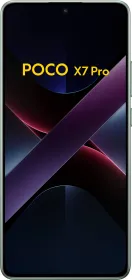The Taiwanese chip manufacturer MediaTek just announced its flagship mobile platform: Dimensity 9400 SoC. Taking the competition to the big leagues, the 3nm processor competes with the Apple A18 SoC (on the iPhone 16 series) and the soon-to-release Qualcomm Snapdragon 8 Elite SoC.
Although the chipset features an extremely powerful CPU and GPU, it also features the new 3GPP Release-17 5G modem to power wireless connectivity. However, while compiling our comparison post between the Dimensity 9400 and the Dimensity 9300, we noticed that the newer model’s spec sheet doesn’t mention anything about mmWave 5G technology.
Also Read: MediaTek Dimensity 9400 Vs. Qualcomm Snapdragon 8 Elite: Early Benchmarks Comparison
Dimensity 9400 Features A New 3GPP Release-17 5G Modem

The publicly available spec sheet for the Dimensity 9400 SoC says it comes with the 3GPP Release-17 5G modem with 4CC-CA (four component carrier aggregation) for combining four channels to achieve higher data speeds and improved network efficiency. The modem can provide up to 7Gbps of data transfer speeds on sub-6GHz frequency bands.
The spec sheet goes on to explain how the modem features MediaTek’s UltraSave 4.0 for efficient 5G usage, R17 enhancements for faster uplink/downlink speeds, AI-based User Activity Classification 3.0 technology with 3dB antenna performance for a 30% greater throughput, and 5G/4G dual-SIM dual-data technology. However, there are no traces of mmWave 5G technology.
In contrast, the spec sheet for the Dimensity 9300 SoC mentions mmWave (FR2) under “Cellular Technologies,” indicating that the previous-generation processor supports the technology. This indicates that the chip manufacturer has omitted support for mmWave 5G frequency bands. What does this mean? How does it impact end users? Let’s try to figure out.
What is mmWave technology?

Network operators around the world use two primary frequency bands to broadcast 5G communication waves: sub-6GHz and mmWave. As the name suggests, the sub-6GHz 5G bands have a frequency range of less than 6GHz (and greater than 3.3GHz). Short for millimeter wave, mmWave 5G bands are characterized by a high-frequency range (between 24GHz and 40GHz) and shorter wavelength.
Due to its nature, mmWave 5G technology can carry much more data (thanks to a higher frequency), resulting in much faster download speeds. In theory, mmWave 5G can provide ultra-fast maximum speeds, reaching around 4 to 5 Gbps. Even though real-world speeds differ based on several factors, mmWave is generally the fastest network in the areas where it is available.
Also Read: No MediaTek For Samsung Galaxy S25 Series?
mmWave vs. sub-6Ghz: What Are The Differences?

However, mmWave’s boon is its biggest curse. Due to a high frequency and short wavelength, mmWave signals are easily blocked by obstacles like buildings, trees, human bodies, etc. Further, mmWave transmission is highly susceptible to interference, which can hamper the signal quality. Last but not least, mmWave integration often increases the cost of manufacturing a smartphone, as it requires special antennas to receive high-frequency signals.
In comparison, the sub-6GHz 5G technology has a broader coverage, provides better penetration, and can operate with lower power. Even though it allows for lower speeds than mmWave, it is a more reliable option, especially for urban areas. This is the reason why sub-6GHz networks are common everywhere in the world.
Which Countries Rely On mmWave Technology?

According to a report by Grand View Research, North America dominates the market for mmWave 5G technology, with a 41.8% share in 2023. The countries in the region, such as the United States and Canada, are among the early adopters of the technology. Renowned network providers like AT&T (5G+), T-Mobile, and Verizon already provide mmWave 5G in select areas.
Ericsson mentions in a report that the American adoption of mmWave mostly falls into two types of deployment. It is either private 5G networks provided to support businesses or hybrid networks that serve in locations with both public and private users. Other countries that showed initial enthusiasm for mmWave 5G networks include Japan and South Korea.
However, the technology is still in its early phases in developing markets like India. While leading telecom players like Jio and Airtel have rolled out mmWave 5G services, smartphone manufacturers often don’t include mmWave antennas on their devices in the region, primarily due to the prevalence of sub-6GHz technology.
Also Read: Best Dimensity 9400 Smartphones Coming In 2024
With The Dimensity 9400 SoC Flagships Coming, Should You Worry Before Getting One?

MediaTek’s DImensity chipsets, especially the flagship ones, have included mmWave support in the past. The Dimensity 9000 SoC didn’t ship with the cellular technology, but the Dimensity 9200 and Dimensity 9300 have included support for mmWave 5G. Although there are plenty of phones powered by these processors in the Chinese and Indian markets, none of them made it to the United States. Now, there could be two reasons for the same.
First, the company is focussing more on its key markets, which happen to be in the Asia Pacific region. Second, it might not want to enter a region heavily dominated by Apple’s A-series of chips and Qualcomm’s Snapdragon SoC (used by Samsung and other companies for flagship smartphones). It could cost them more than they could make from the market.
These could also be the reason behind the omission of mmWave technology from the Dimensity 9400 SoC. Even if the company wants to foray into the United States market, it could leverage the sub-6GHz frequency bands. There’s a chance that MediaTek could launch a Dimensity 9400+ SoC for the market, as it confirmed its entry into the US market (earlier this year), but it’s too tough to make a solid comment on the same, at least for now.
Our Indian readers need not worry about the situation, as the Dimensity 9400, with all its power and glory, supports sub-6GHz 5G technology. All the major telecom players, such as Jio, Airtel, and Vodafone Idea, already support the network bands. To conclude, users will have no problem accessing 5G internet on Dimensity 9400-powered smartphones in India.
You can follow Smartprix on Twitter, Facebook, Instagram, and Google News. Visit smartprix.com for the latest tech and auto news, reviews, and guides.


































